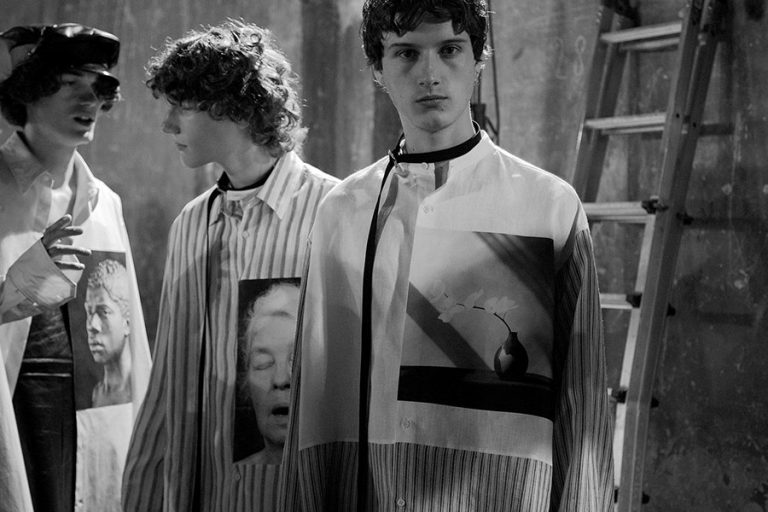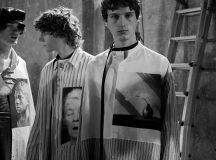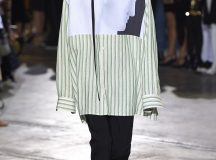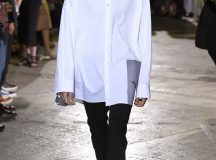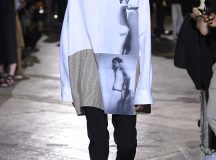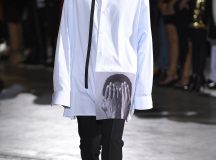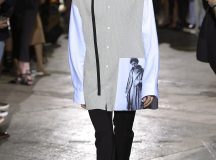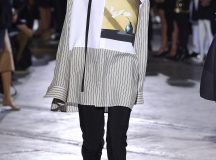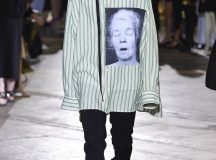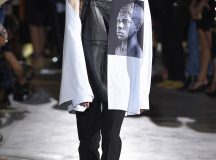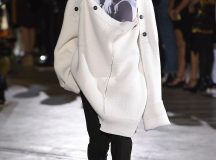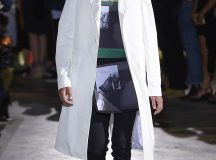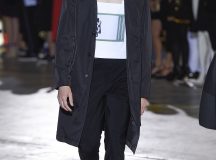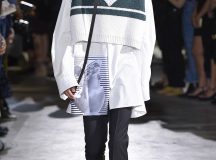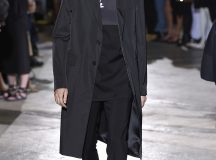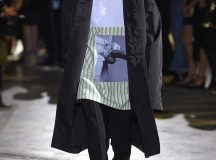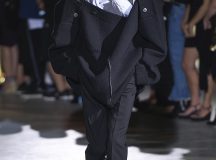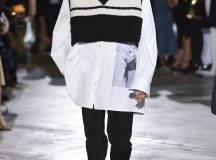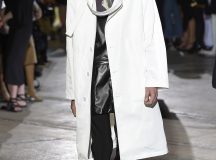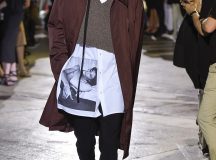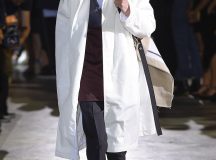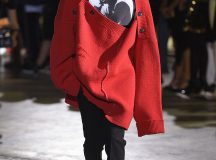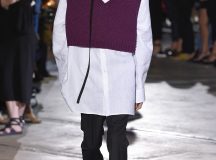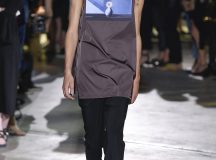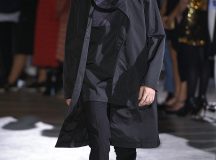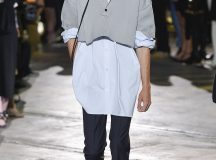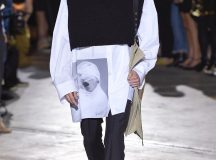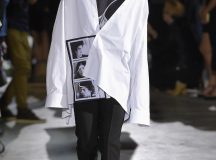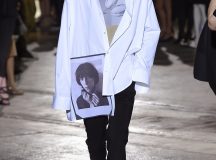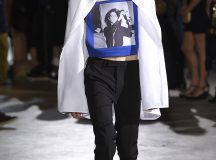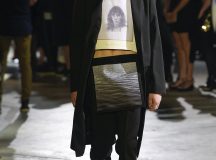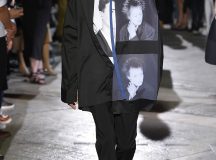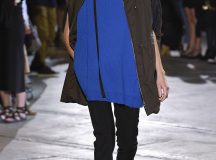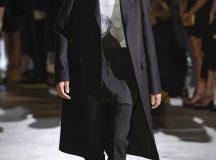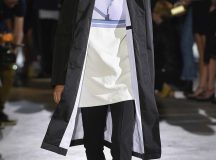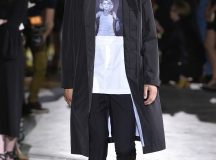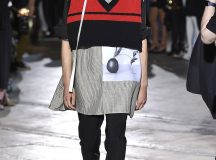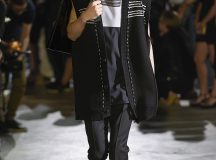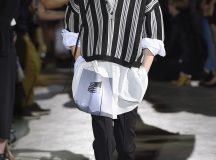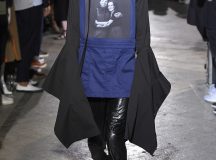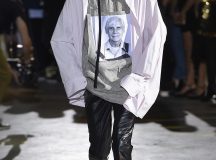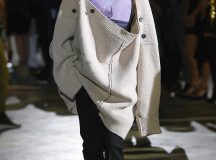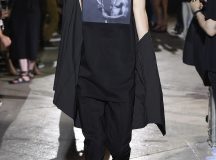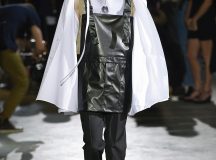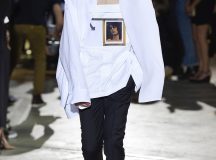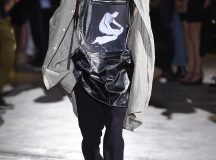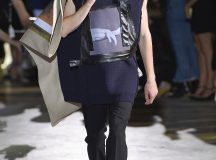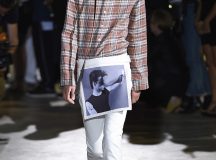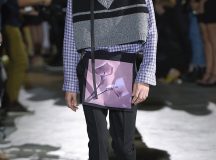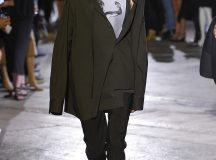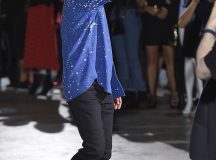The curatorial aspect of Raf Simons for the work of Robert Mapplethorpe in Raf Simons Spring 2017 Menswear Collection.
For the first time in years, without the usual pressure of another brand to carry as well as his own (previously was Dior and Jil Sander), Mr. Simons has a single focus: Raf Simons. On Thursday night, he staged his new collection for a gathering of men and mannequins at Pitti Uomo, the biannual Florentine trade fair where, in 2005, he showed his 10th anniversary collection.
The new collection was made in collaboration with the Robert Mapplethorpe Foundation, which reached out to him to explore the work of Robert Mapplethorpe, the photographer best known for his transgressive (and highly controversial) documentation of New York’s gay and fetish communities in the 1970s and 80s. More than simply repurposing the work, Simons expressed a desire to present the world of an artist he has followed for years in curatorial runway or in other words ‘a walking gallery’. Mapplethorpe’s image and images ran throughout the collection, appearing on every garment both literally and in more referential ways. You could trace many of the most famous photos here: portraits of Patti Smith, Debbie Harry, Robert Sherman and Alice Neel (Simons been given free roam of the archive, although he had to get the permission of every portrait featured).
With photos featured on garments Raf style, his exercise in Mapplethorpism wasn’t art-on-art the way we’ve so often seen it in Florence, but rather art-on-craft. He framed the photographer’s portraits with his garments several times over, adding roomy coats and shirts and knits over tops revealing the works. The clothes were Raf at his best—exaggerated proportions on top with precisely cut trousers and Raf Simons x adidas slides with black socks on the bottom. Besides the photo prints, Mapplethorpe’s influence could be felt in the shine and studs of a leather bar trucker hat, the subtle sexuality of a thin belt worn around the neck. With leather aprons and harness-like straps, SS17 was arguably Simons most overtly fetishistic showing yet.
That palpable sense of connection freed the Mapplethorpe works from the static confines of a gallery retrospective, just as Mr. Simons’s own archive, unpedestaled, peopled the crowd. One provocateur and innovator saluted another: Looking at Mr. Simons’s work and Mapplethorpe’s, it was striking to see once again how influential each has been, and to recognize the debt contemporary men’s wear owes to Mr. Simons, and photography to Mapplethorpe.

